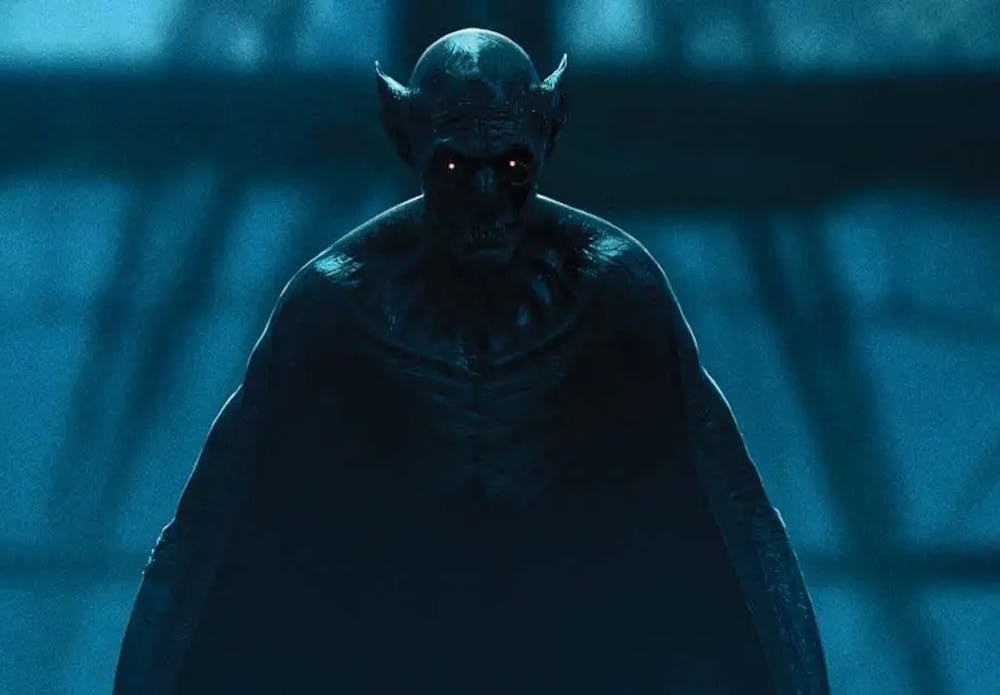Earlier this summer, I read Bram Stoker’s “Dracula” for the first time. Around a third of the way through the book, the sailing ship Demeter crashes into the shore of England, and unleashes Dracula onto the country.
“Dracula” is structured as a collection of papers, journals and documents, and Stoker includes the incredibly well-written captain’s log in the story. The short chapter is chilling, suspenseful and cinematic. As I read it, I thought, “Dang, this should be a movie!”
I guess I wasn’t the only one who thought that, because just a few months later I stumbled upon the poster of “The Last Voyage of the Demeter,” a film based on that very chapter. As an intense Dracula lover – I’ve seen four film adaptations of the novel – I was incredibly pumped.
Unfortunately, the film didn’t surpass its source material. Though I enjoyed many of the creative decisions, the overall plot fell flat.
“The Last Voyage” follows the crew of the Demeter, tasked with transporting dozens of boxes to London for a mysterious beneficiary. Their trip begins to fall into disarray as strange happenings and gory disappearances plague the ship.
The concept is absolutely amazing. I can picture dozens of films based on this idea alone. As I read the book, I pictured a hyper-historically accurate film reminiscent of “The Lighthouse” where Dracula doesn’t even show up on camera until the last five minutes. But that’s just me.
Sadly, I don’t feel like the film fully capitalized on the creative potential of the concept. It gets watered down under a layer of contractually-obligated Dracula filler to truly showcase the suspense.
A chilling aspect of the original story is the mystery – crew members suddenly, impossibly disappear from the ship. In the film, however, whenever a crew member dies, we see them get their throat ripped out by Dracula. Leaving the deaths a surprise to both the audience and the characters would put us more in that moment.
I love a good Dracula kill as much as the next guy, but what makes the story interesting is the suspense of it all. Not knowing how or when a character died would create a more claustrophobic, interesting atmosphere, rather than just a basic horror flick.
On a more positive note, I loved the design of Dracula. I was super happy to see a more unique take on the character, from his Nosferatu teeth to his weird fleshy wings. It emphasizes his more animalistic aspects, which usually aren’t touched upon in film adaptations. Usually, Dracula ends up being a suave, professional member of high society, when he’s more of an aristocratic hermit in the book.
As always, I wish that the design was a bit more practical. It’s painfully obvious that most of Dracula is computer generated, and while it still looks impressive, it takes me out of the moment.
The cast was a standout aspect of the film. Liam Cunningham and David Dastmalchian were both great as the captain and the first mate, respectively. I also solidly enjoyed Corey Hawkins and Aisling Franciosi, who brought a good energy to their roles.
For any Dracula-heads in the audience, there wasn’t much of a connection to the original story we know and love. I was hoping for a Van Helsing or Mina Harker cameo at the end – heck, I’d even take a Quincey Morris. Unfortunately, nothing of the sort occurred.
Despite its good concept, I ultimately couldn’t get into “The Last Voyage” the way I wanted to. It’s a shame, since it’s nearly impossible to go wrong with Dracula on a boat. The movie seems to mostly ride off the coattails of this concept instead of doing anything super original with it.
If you’re a Dracula fan, go check it out, but don’t expect something that will change your life. It’s a fine horror flick to see with a few friends, even if its story has been bled dry.






